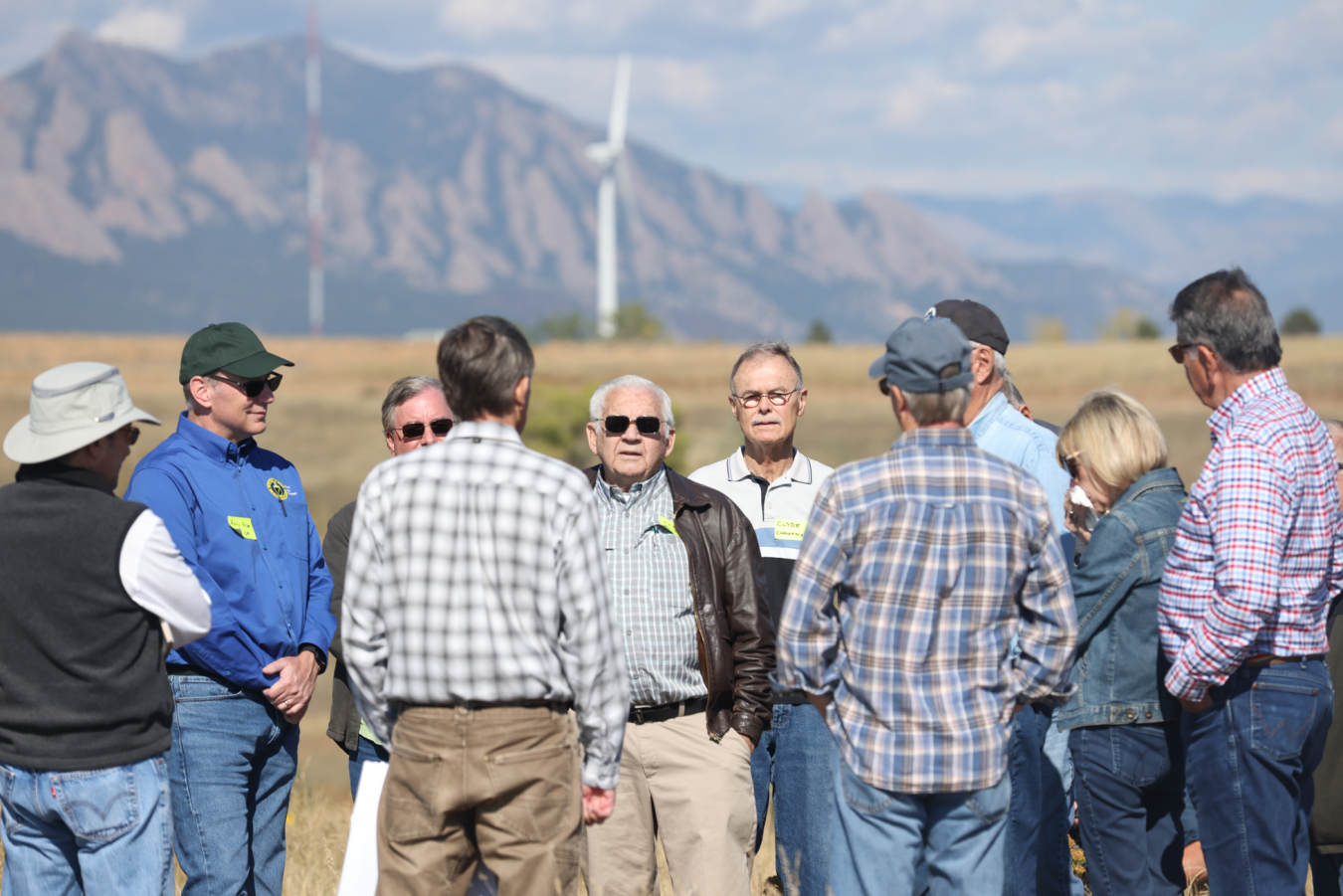Retired workers return to site of former nuclear production facility, find dramatically changed landscape.
November 14, 2022They believed the work was important. They felt they had a great job. They knew it could be dangerous, but they trusted the layers of safety and protection. And they considered their coworkers family. Once the size of a small city, the Rocky Flats Plant where they spent a significant part of their lives is gone.

Rocky Flats Site Manager Andy Keim, second from left, listens to retirees during a tour of the former plant site near Denver, Colorado, on Oct. 5.
On Oct. 5, 2022, Rocky Flats Site Manager Andy Keim and a team of LM and LM contractors hosted Rocky Flats Plant retirees on a visit to their former workplace. They visited locations where buildings they worked in used to stand, and reminisced about their time building weapon components for the U.S. government. For most of them, it was the first time back at Rocky Flats since they retired.
Beginning in the early 1950s, employees of the Rocky Flats Plant near Denver built nuclear triggers and other components supporting the nation’s nuclear weapons complex for more than 40 years. Following the end of the plant’s mission in the mid-1990s, the U.S. Department of Energy (DOE) conducted a 10-year, $7 billion site closure and cleanup project.
The tour provided retirees with the opportunity to see the site, share stories and experiences from their work at the plant, and learn about the DOE Office of Legacy Management’s ongoing commitment to human health and the environment at the site.
For the LM staff, listening to the former plant workers provided an opportunity to learn firsthand about the site’s legacy and understand the important role the site and its workers played in the nation’s history.
“I came to Rocky Flats in 1974 after I got out of the Army,” Tony Abeyta said. “It was hard to get a job as a veteran back then, and I was really grateful for the job.”
Abeyta said he worked in nearly every building on site during his career doing construction and really felt that the people who worked there considered themselves part of a big Rocky Flats family.
Jack Weaver, who started at Rocky Flats in 1961 and retired in 1996, reinforced the feeling of kinship the retirees share.
“It was a family,” he said. “A lot of it had to do with the secrecy, us not being able to talk to anyone outside about what we were doing.”
People felt like they were part of an on-the-job family. Some took it a step further and became a real family, like Mike and Sally Butler.
Mike started at Rocky Flats in 1975 and worked as an engineer until 1995. Sally joined as an on-site contractor in 1990.By 1995 they were married and moved together to continue their careers at the Los Alamos National Laboratory in New Mexico.
“I came to Colorado in 1966 in the Air Force and fell in love with the state,” Butler said. “I went to work for Rockwell, and they asked me to go to Rocky Flats, where I fell in love again.”
Keim and his team led a tour of locations, starting where the former Central Avenue ran through the plant, and then on to where the major plant buildings once stood. More than one retiree commented that with all the buildings gone, they couldn’t recognize where they were.
One common memory in the stories the retirees shared was of the wind at Rocky Flats.
“I remember looking out to the east and seeing tornadoes out in the plains,” said Jeff Schultz, an engineer who worked in just about every building at Rocky Flats at one time or another. “We had wind all the time and I recall that we had winds up to 150 miles-an-hour.” Other retirees pitched in with stories about broken car windows and sand-blasted bodywork.
Weaver added that there were very few windows in the production buildings.
“Hardly anyone had an office with a window. It was dark all the time,” Weaver said. “It took nearly 50 years for me to get a window.”
The retirees were unanimous in their belief that although some worked with potentially dangerous materials, they always felt safe on the job.
“I always thought Rocky Flats was a safe place to work,” Basso said. “To my mind, my health and safety were never in doubt, and I never felt I was in danger.”
“I thought the tour went well and was really excited to hear their stories about the production days,” Keim said. “Hopefully, this is something that we can do again.”

